How Was This Picture Made #01?
Going forward, we will be featuring the new “how was this picture taken” series articles, asking our readers to look at an image, analyze it and provide information on how they think the image was captured. When guessing, information could include such data as: approximate exposure variables (shutter speed, aperture and ISO), focal length, camera to subject distance, camera and lens used, what the gear was mounted on, post-processing techniques, composition, cropping, etc. This could be a fun exercise for our readers to practice with and we see it leading to all kinds of fun discussions.
To start off the series, I am presenting this photo of the Milky Way, which I photographed a couple of days ago in San Juan Mountains of Colorado:
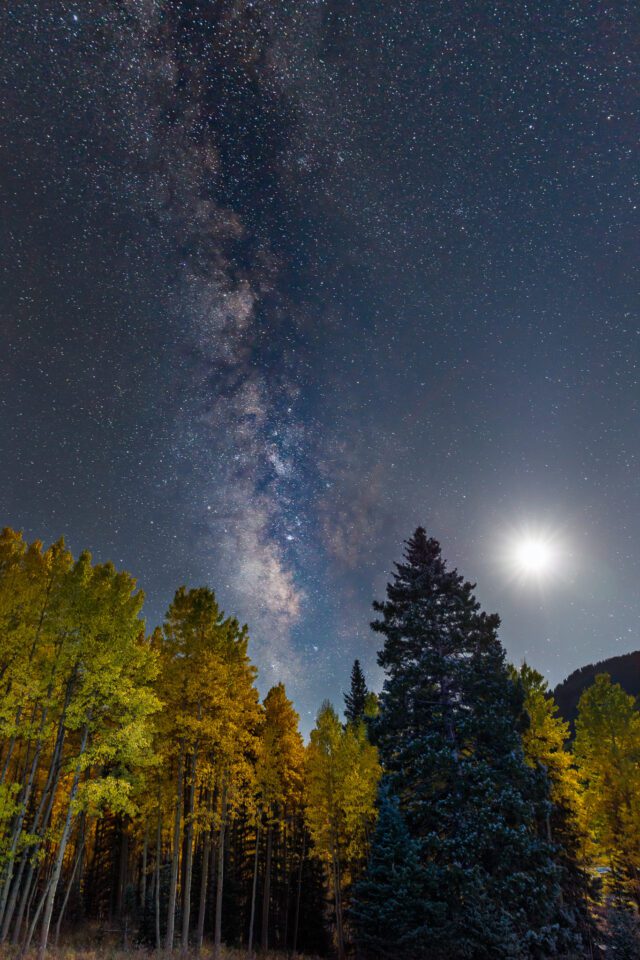
The bright object to the right of the Milky Way is the Moon. How did I take this shot? What specific techniques did I use to capture the image? What is the approximate exposure time, aperture and ISO? What gear was I using and why? Did the choice of gear matter at all for such a shot? How did I expose for the trees in the foreground? How did I post-process the image?
كيف تم صنع هذه الصورة رقم 01؟
من الآن فصاعدًا، سنعرض سلسلة المقالات الجديدة "كيف تم التقاط هذه الصورة"، ونطلب من قرائنا النظر إلى الصورة وتحليلها وتقديم معلومات حول الطريقة التي يعتقدون أنها تم التقاطها بها. عند التخمين، يمكن أن تتضمن المعلومات بيانات مثل: متغيرات التعريض التقريبية (سرعة الغالق وفتحة العدسة وISO)، والبعد البؤري، والمسافة بين الكاميرا والهدف، والكاميرا والعدسة المستخدمة، والجهاز الذي تم تركيب الترس عليه، وتقنيات ما بعد المعالجة، والتركيب، والاقتصاص وما إلى ذلك. قد يكون هذا تمرينًا ممتعًا لقرائنا للتدرب عليه ونراه يؤدي إلى جميع أنواع المناقشات الممتعة.
في بداية السلسلة، أقدم هذه الصورة لمجرة درب التبانة، والتي قمت بتصويرها قبل يومين في جبال سان خوان في كولورادو:

الجسم اللامع الموجود على يمين مجرة درب التبانة هو القمر. كيف التقطت هذه اللقطة؟ ما هي التقنيات المحددة التي استخدمتها لالتقاط الصورة؟ ما هو وقت التعرض التقريبي وفتحة العدسة وISO؟ ما هو العتاد الذي كنت أستخدمه ولماذا؟ هل كان اختيار الترس مهمًا على الإطلاق لمثل هذه اللقطة؟ كيف عرضت للأشجار في المقدمة؟ كيف قمت بمعالجة الصورة بعد ذلك؟
Going forward, we will be featuring the new “how was this picture taken” series articles, asking our readers to look at an image, analyze it and provide information on how they think the image was captured. When guessing, information could include such data as: approximate exposure variables (shutter speed, aperture and ISO), focal length, camera to subject distance, camera and lens used, what the gear was mounted on, post-processing techniques, composition, cropping, etc. This could be a fun exercise for our readers to practice with and we see it leading to all kinds of fun discussions.
To start off the series, I am presenting this photo of the Milky Way, which I photographed a couple of days ago in San Juan Mountains of Colorado:

The bright object to the right of the Milky Way is the Moon. How did I take this shot? What specific techniques did I use to capture the image? What is the approximate exposure time, aperture and ISO? What gear was I using and why? Did the choice of gear matter at all for such a shot? How did I expose for the trees in the foreground? How did I post-process the image?
كيف تم صنع هذه الصورة رقم 01؟
من الآن فصاعدًا، سنعرض سلسلة المقالات الجديدة "كيف تم التقاط هذه الصورة"، ونطلب من قرائنا النظر إلى الصورة وتحليلها وتقديم معلومات حول الطريقة التي يعتقدون أنها تم التقاطها بها. عند التخمين، يمكن أن تتضمن المعلومات بيانات مثل: متغيرات التعريض التقريبية (سرعة الغالق وفتحة العدسة وISO)، والبعد البؤري، والمسافة بين الكاميرا والهدف، والكاميرا والعدسة المستخدمة، والجهاز الذي تم تركيب الترس عليه، وتقنيات ما بعد المعالجة، والتركيب، والاقتصاص وما إلى ذلك. قد يكون هذا تمرينًا ممتعًا لقرائنا للتدرب عليه ونراه يؤدي إلى جميع أنواع المناقشات الممتعة.
في بداية السلسلة، أقدم هذه الصورة لمجرة درب التبانة، والتي قمت بتصويرها قبل يومين في جبال سان خوان في كولورادو:

الجسم اللامع الموجود على يمين مجرة درب التبانة هو القمر. كيف التقطت هذه اللقطة؟ ما هي التقنيات المحددة التي استخدمتها لالتقاط الصورة؟ ما هو وقت التعرض التقريبي وفتحة العدسة وISO؟ ما هو العتاد الذي كنت أستخدمه ولماذا؟ هل كان اختيار الترس مهمًا على الإطلاق لمثل هذه اللقطة؟ كيف عرضت للأشجار في المقدمة؟ كيف قمت بمعالجة الصورة بعد ذلك؟

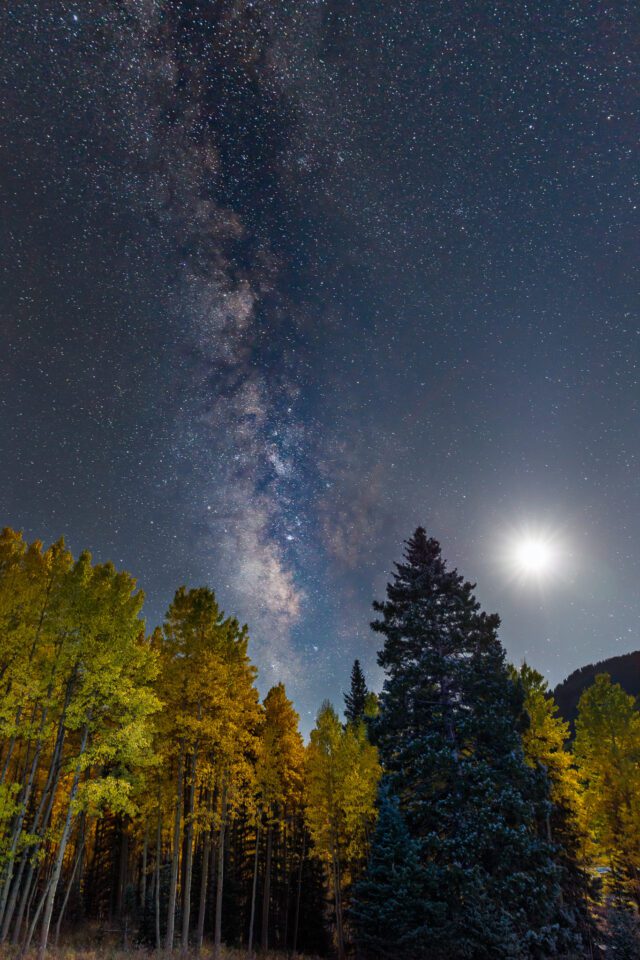
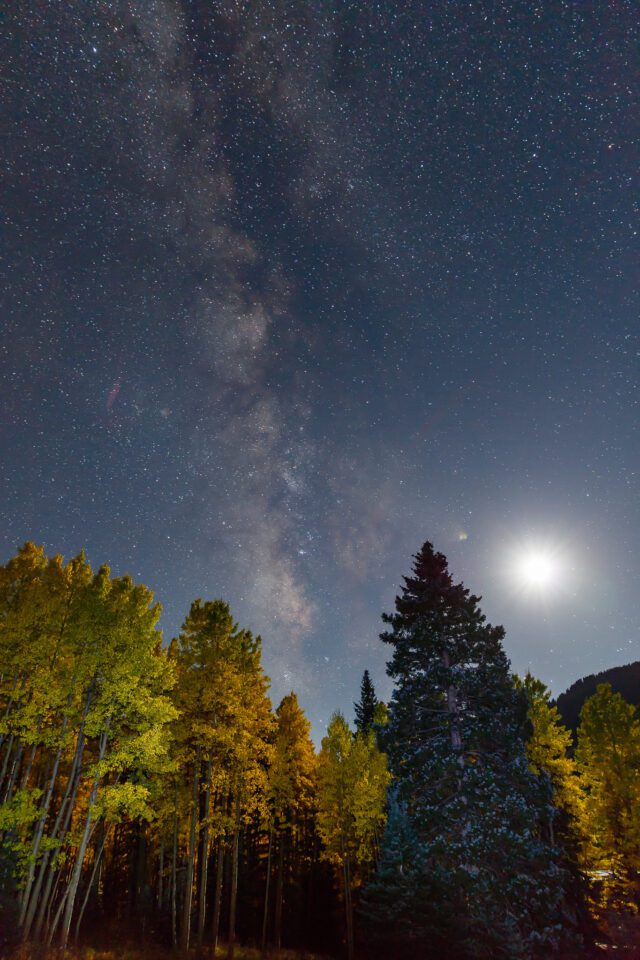
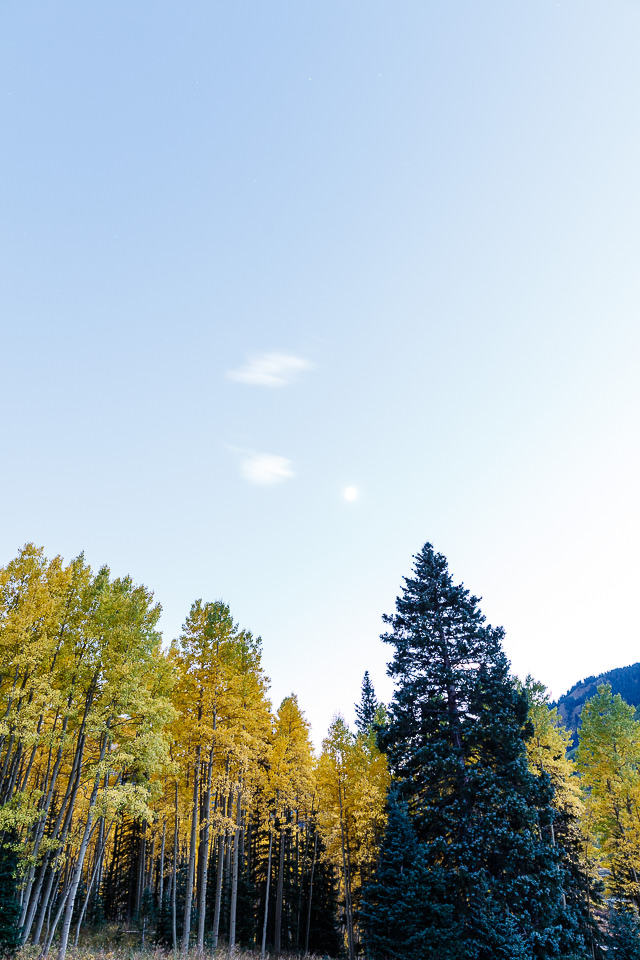
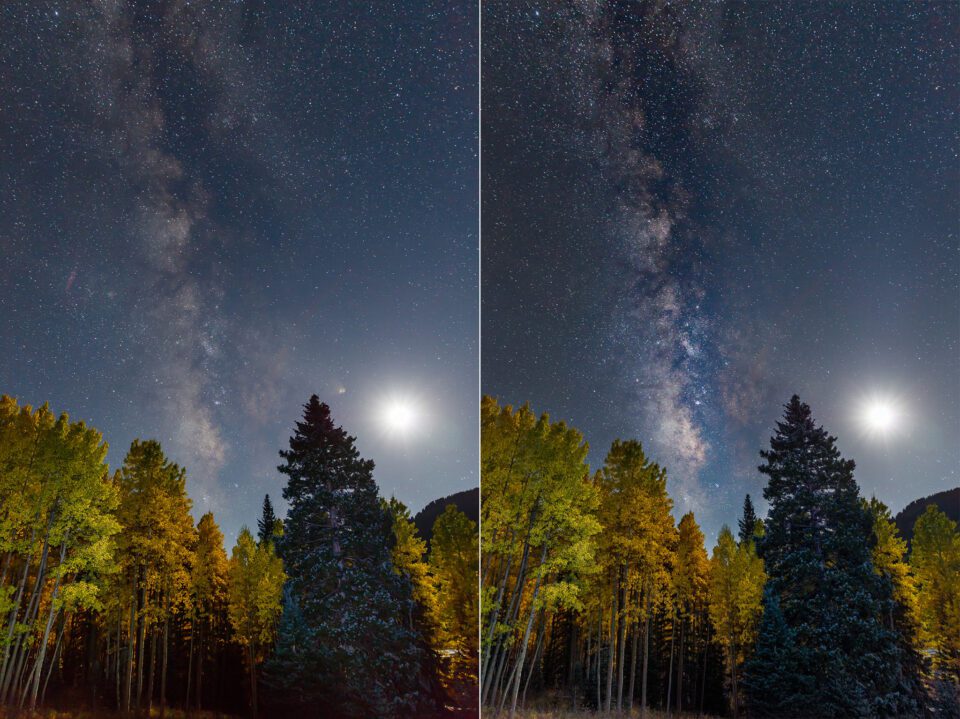
تعليق